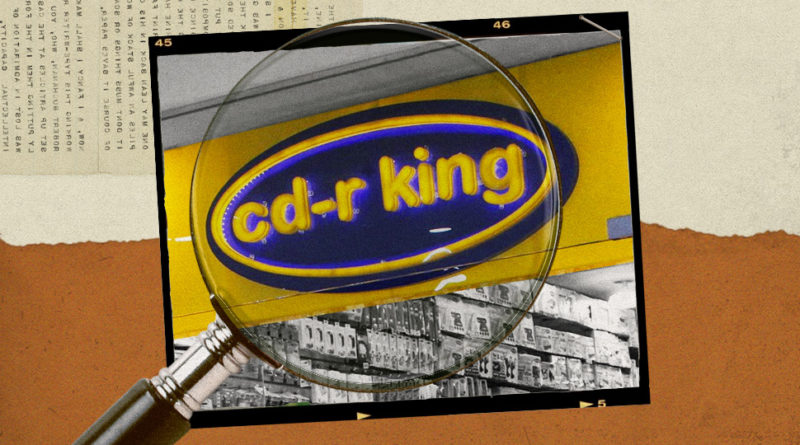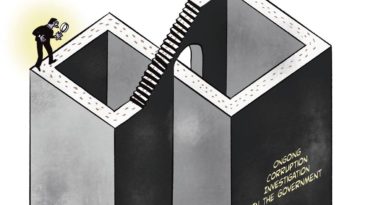INDUSTRY | What Happened to CD-R King?
Everybody’s favorite electronics store is a shadow of its former self.
.
.
At its peak, CD-R King had about 500 branches scattered all across the archipelago. By comparison, Mang Inasal, one of the most famous fast-food chains in the country currently has around 450 branches.
CD-R King was the retail equivalent of the lechon manok, shawarma or milk tea craze—only it was just one company that pretty much monopolized the market for inexpensive computer parts and electronics.
Sure, there are probably dozens, even hundreds of other stores where you could get mobile phones, thumb drives, or low-end tv sets and digital music players, but only CD-R King was able to build a brand that became big enough to enter the country’s cultural zeitgeist. Almost everybody knows CD-R King, precisely because almost all of us has bought something from one of its stores at one time or another.
But try to think about when you last visited a CD-R King. Probably not in the last few months, especially with restrictions caused by the pandemic. But even before then, what was the last thing you bought at a CD-R King? Are there even CD-R King stores still operational today?
Ads by:
Memento Maxima Digital Marketing
@[email protected]
SPACE RESERVE FOR ADVERTISEMENT
What happened to CD-R King?
Roots of CD-R King
CD-R King started in Quiapo, Manila in 1997. Records show that the company was founded by Nicholson Santos and Henry Ngo. The original CD-R King was a small store in Paterno Street that initially sold CD-Rs or recordable CDs back when it was the preferred mode of data storage.
Eventually that original branch closed down and CD-R King started opening branches near colleges and universities, a strategic move to be closer to its target market—students and educators.
“Flash drives and memory cards were already becoming popular (back then), so we knew the demand will come,” said Daryle Ganchua, then-regional manager CD-R King in an interview with the TV show Game Changer on ANC published in March 2016.
It was the demand for newer technologies that led CD-R King to diversify its merchandise to include newer technologies that were mostly imported from China. After CD-Rs and CD-RWs (CD-Rewritable), the company started selling computer parts, smartphones, audio and video equipment, car accessories, LED lights and home appliances.
“We really want to give tech to the masses,” Ganchua said then. “And we try to make it as affordable as possible.
Rapid expansion
CD-R King expanded rapidly in the early to mid-2000s, opening branches in most of the major shopping centers like SM and Robinsons malls, and even in so-called higher-end malls like the Podium. By 2016, CD-R King had about 350 branches, according to the Game Changer feature. They had branches in nearly every major city, including in provinces like Baguio, Batangas, Laguna, Rizal, Cebu and as far away as Ozamiz City. All of them were company-owned.
“Our aim, if possible is to put a CD-R King in every town,” Ganchua said in a separate interview that he gave to online platform Unbox PH, which was published in June 2015. “We don’t (have) high profit margins because we want (to give) the Filipino people the latest technology.”
Although CD-R King imports the products wholesale and then turns around and sells these to the end-consumer through its retail channels, the company also started slapping its name on to generic products, effectively selling these products under the CD-R King brand.
Ads by:
Memento Maxima Digital Marketing
@[email protected]
SPACE RESERVE FOR ADVERTISEMENT
It seemed to work. The store’s popularity skyrocketed during this time. Anecdotal evidence suggests that people that were slowly becoming aware of consumer tech products began thinking of CD-R King as the go-to store for all of their electronics-related needs. It wasn’t uncommon to see the gleaming stores with the bright yellow sign teeming with customers.
Ads by:
Memento Maxima Digital Marketing
@[email protected]
SPACE RESERVE FOR ADVERTISEMENT
Challenges and customer complaints
But simultaneous with the company’s success and popularity came complaints from its customers. Many questioned the quality of the products, with some accusing the store of selling substandard merchandise that broke or fell apart way too soon.
“We have a one percent defect (in our merchandise),” Ganchua told Unbox PH, when asked about the issue. “One to two percent return rate. That’s the highest.”
Another complaint was the payment system that CD-R King had in its stores. For years, sales personnel wrote out receipts by hand for all purchases, which doubled or tripled the waiting time for its customers. Even well into its 10th year of existence, the store still kept the same system, which has led many people to question why it hasn’t adopted a more efficient way of completing this part of the transaction.
By the latter part of the 2010s, CD-R King, and indeed, most other brick-and-mortar retail stores, began to contend with the rise of ecommerce, specifically, online retail stores. According to Statista, while the market for ecommerce was worth only about $500 million in 2015, it surged to about $3 billion four years later in 2019 and is projected to reach about $12 billion by the year 2025.
“The most common forms of e-commerce in the Philippines were B2C and C2C models,” Statista says. “In a B2C model, online consumers are offered competitive prices because of the unlimited marketplace. From a business owner perspective, it lowers their cost of doing business; hence, it enables them to reduce the transaction costs for customers.”
Especially for electronics, computer peripherals and mobile phone accessories, many people began turning to online marketplaces for these items. It’s interesting to note, however, that CD-R King has an official online store in Lazada, one of the top ecommerce platforms in the country.
Ads by:
Memento Maxima Digital Marketing
@[email protected]
SPACE RESERVE FOR ADVERTISEMENT
Where CD-R King is now
There was a spate of CD-R King store closures over the last few years. From a high of 500 stores, CD-R King currently has less than 10 branches, according to a source from an official of the leasing department of one of the country’s major shopping malls. The source says that the CD-R King there is still operational, but has closed down several other branches in the same mall network even before the onset of the coronavirus pandemic. And as far as the source knows, the company has also undergone a change of ownership.
We can’t say for sure that ecommerce has contributed to the decline of CD-R King, but it certainly hasn’t helped the company’s bottom line. In addition, competitors such as Miniso, Mumuso, and similarly themed mini-department stores that sell similar items that CD-R King sells, such as speakers, headphones and earphones, powerbanks and the like, have likely eaten into CD-R King’s market share.
Ads by:
Memento Maxima Digital Marketing
@[email protected]
SPACE RESERVE FOR ADVERTISEMENT
Esquire Philippines tried to reach out to the owners and management of CD-R King, but it’s tough to find any information on the company itself. The website is offline and the last post on its official Facebook page was last March. We also reached out to a former executive of the company who told us that current officials politely said no to our request for an interview.
One other theory about the decline of CD-R King is the sheer volume of products available in store. At one point, the company also started selling electric bikes, solar panels, lightbulbs, CCTV cameras and surveillance systems, 3D printers and even rice cookers, mini refrigerators, and windmills (Yes, actual windmills). While this has led to endless jokes and memes about the variety of products one can buy at a CD-R King store, there’s always that caveat of spreading oneself too thin. Its quest to cover all bases and be everything to everybody might have ultimately worked against it.
.
.

Ads by: Memento Maxima Digital Marketing
@[email protected]
SPACE RESERVE FOR ADVERTISEMENT
——————————————————-











